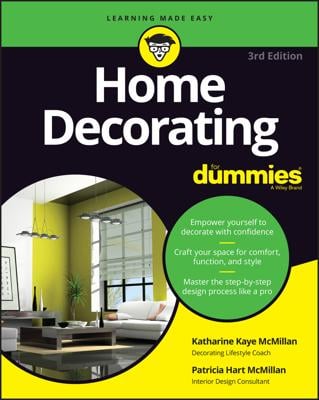When you are planning your kitchen remodel you need to choose a kitchen shape that meets your needs and fits with your home’s design and flow. Traditionally, kitchens come in various shapes, the most popular of which are discussed here:
L-shaped kitchens: An L-shaped kitchen has two of the three major kitchen appliances on one wall. The existing plumbing and electrical setups dictate where you place things, unless you’re planning some major repositioning of supply lines and wiring.
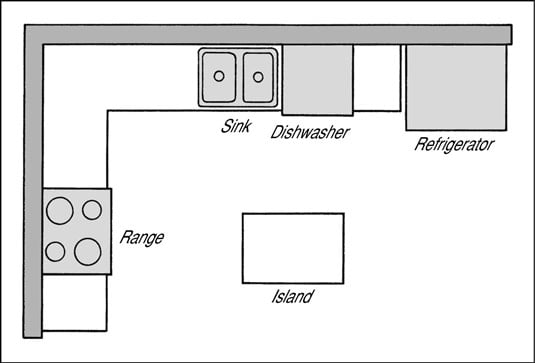
An L-shaped kitchen can accommodate a center island or a peninsula, depending on the size of the kitchen space. Just make sure you have at least 42 inches of clearance between the island and any cabinets, and make that distance 48 inches if you have two cooks in the family.
U-shaped kitchens: A U-shaped kitchen is similar to an L-shaped kitchen, but with three wall surfaces instead of two. In a U-shaped design, you typically have the sink on one wall, the range and oven on another, and the refrigerator on the third wall.
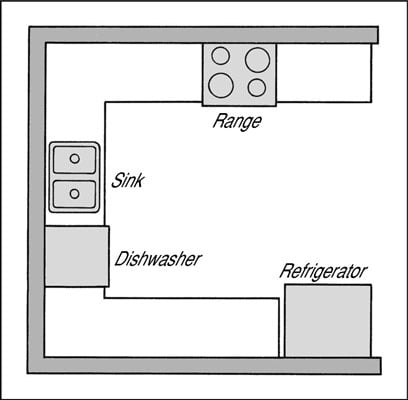
This layout makes good use of counter space because usually it has more counter space per square foot than any other design. You have counter area on both sides of the sink, as well as adequate working space next to the range. A U-shaped kitchen also usually has plenty of counter space next to the refrigerator, which is great when you want a place to set those full bags of groceries. This layout makes everyday life a bit easier.
The U-shape kitchen does have a couple of drawbacks: The two corners can turn into huge wasters of space. You can maximize the storage capabilities, though, by using an appropriate type of storage assembly inside the corner cabinets. Another problem is that the work areas are sometimes too far apart for convenience.
G-shaped kitchens: This style is relatively new in kitchen designs and is becoming quite popular, but only when the kitchen boasts enough floor and area space to allow for a fourth wall. The short fourth wall is what changes the shape from a U to a G.
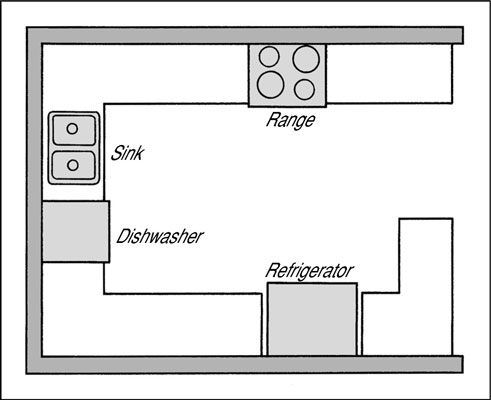
I-shaped or single wall kitchens: The I-shaped kitchen places all the appliances on one wall, and it doesn’t provide a very efficient work area. However, in some cases the I-shaped kitchen is your only option.

If you do need to go with this layout, place the sink between the refrigerator and the stove. Make sure, too, that the refrigerator door hinges are on the side that’s away from the sink. This way, the door will open away from the sink and not block you from moving food from the refrigerator onto the counter work area.
Corridor/Galley/Parallel wall kitchen: The galley kitchen is your best option when space is limited because you can at least place the appliances on opposite sides, which helps the workflow. The layout of items is a bit like the L-shaped kitchen, two on one wall and one on the other.
Typically, you’ll find the range and oven and refrigerator on one wall and the sink on the other. Placing the sink by itself, you maximize the amount of counter space. This layout also lets you create a modified version of the work triangle, which is what all kitchen designers use to establish placement, spacing, and traffic flow.
When considering your layout, take into account the work triangle, created in 1949 by the Small Home Council of the University of Illinois, to connect the three main areas of the kitchen — the cooking (cooktop or stove), refrigeration storage (refrigerator), and clean up centers (sink) — in an efficient manner.
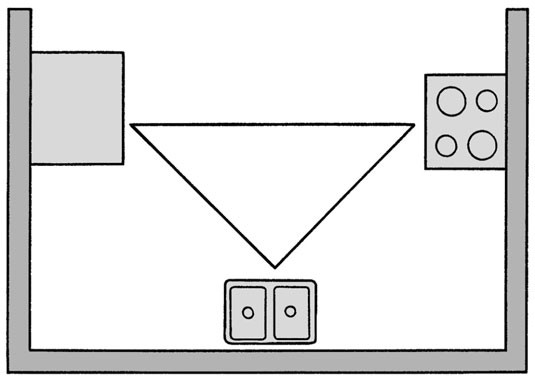
A work triangle’s three sides should total 26 feet or less. No single leg should be shorter than 4 feet or longer than 9 feet. The triangle should be located so that no traffic pattern will cross through it. Never interrupt any primary work area (preparation, cooking, or clean up) with a floor-to-ceiling cabinet, pantry, or refrigerator.

